41 introduction to waves worksheet answers
The Amplitude is the height from the center line to the peak or to the trough. The answer is C. Frank The Firefighter Firefighter Distance Learning Reading Comprehension Waves come in two different forms. Waves introduction and types worksheet answers. Discover learning games guided lessons and other interactive activities for children. A Transverse Wave which […]
Physics 1101: Introduction to Waves. Instructions. Before viewing an episode, download and print the note-taking guides, worksheets, and lab data sheets for that episode, keeping the printed sheets in order by page number. During the lesson, watch and listen for instructions to take notes, pause the video, complete an assignment, and record lab ...
There is an example at. March 25 2015 "wavestown" sheet label the 7 types of em waves from waves worksheet answer key, source: Introduction to Waves Worksheet Lesson Wave Behavior Lab . 31 waves and electromagnetic spectrum worksheet key written by paul a cho sunday, may 16, 2021 add comment edit. Em waves worksheet answers. Electromagnetic ...
Introduction to waves worksheet answers
File previews. docx, 49.69 KB. This worksheet is prepared to train students to have good knowledge about wave basics. My learners found this useful. Hope it would be useful for others as well. Kindly leave a comment about this worksheet! Tes classic free licence.
Chapter 9: Intro to Waves. 21 terms. JestersEye. Chapter 10 the nature of waves. 16 terms. Caitlyn1215. Physical Science- Unit 3 Waves. 23 terms. Reid_Baker.
Electrical waves can travel through a vacuum.. Radio and microwaves, light, and x-rays are all electrical waves.. Wavelength and Amplitude. The Wavelength is the length from one peak to the next (or from any point to the next matching point):. The Amplitude is the height from the center line to the peak (or to the trough). Or we can measure the height from highest to lowest points and divide ...
Introduction to waves worksheet answers.
About Waves Types Answers And Worksheet Introduction . Physics 1101: Introduction to Waves Instructions Before viewing an episode, download and print the note-taking guides, worksheets, and lab data sheets for that episode, keeping the printed sheets in order by page number.
Measure of the energy in a wave. ... Matter moves at right angles to the direction the wave travels. ... Highest point of a wave. ... Bending of a wave as it passes ... Rating: 3 · 2 reviews
Anatomy of a Wave worksheet | Anatomy of a Wave worksheet Key Create a Wave Grid Diagrams for Labeling Waves Waves Review Sheet from Glencoe Directed Reading for Content Electromagnetic Spectrum Sheet (just introduction to spectrum) Electromagnetic Spectrum Summary Sheet from BBC Video Clips on Waves (Note: showing all video clips is not ...
wave 5. wave that makes matter in the medium move back and forth at right angles to the direction the wave travels 6. ability of two or more waves to combine and form a new wave 7. lowest point of a transverse wave 8. material through which a wave transfers energy 9. the bending of waves around a barrier 10. less dense region of a compressional ...
Students learn about the types of waves and how they change direction, as well as basic wave properties such as wavelength, frequency, amplitude and speed. During the presentation of lecture information on wave characteristics and properties, students take notes using a handout. Then they label wave parts on a worksheet diagram and draw their own waves with specified properties (crest, trough ...
ID: 11820 Language: English School subject: Physics Grade/level: grade 9 Age: 16-18 Main content: Waves Other contents: Add to my workbooks (82) Download file pdf Add to Google Classroom Add to Microsoft Teams
Overview Introduction To Waves - Displaying top 8 worksheets found for this concept.. Some of the worksheets for this concept are G4 u2 l3 lesson 3 waves, A guide to sound waves, Waves energy in motion, Activity template, Physics in concert teacher notes and student work, Teacher guide answers continued, Unit physics a outline and lesson plans, Lesson plan 22 making waves.
Preview this quiz on Quizizz. August 31 2020 on Waves And Electromagnetic Spectrum Worksheet Quizlet. Electromagnetic Spectrum Worksheet DRAFT. Use the word bank to answer the following questions. Light waves are waves of energy and the amount of energy in a wave is proportional to its frequency. Start studying Electromagnetic Spectrum Worksheet.
Section 1: Introduction 3 1. Introduction Waves occur in almost all branches of science. The basic concepts discussed in this introductory package may be applied to all waves including the three shown below: Sawtooth wave Square wave Sine wave Waves are typically disturbances in some medium: they include electro-
Start studying science 8 electromagnetic spectrum worksheet answers. Learn vocabulary terms and more with flashcards games and other study tools. Labeling waves worksheet answer key labeling waves worksheet answer key and waves and electromagnetic spectrum worksheet answer key are three of main things we want to show you based on the gallery title.
Waves - Wave Properties (Introduction to Waves) - PUZZLES + Answer Keys. Including 9 different types of puzzles with answer keys as pdf & word documents, (18 pages)1.Types of puzzles;- Crossword, Word Maze, Word Search, Word Angles, Word Trails, Spelling Challenge, Missing Vowels, Matching, Jumbles2. Study sheet!3.
waves. Class__. Chapter Introduction to Waves. Review -. Part A. Vocabulary Review ... Directions: Use the diagram below to answer questions 1-5.5 pages
The basic properties (parts) of a wave include: frequency, amplitude, wavelength and speed. Frequency. Frequency is a measure of how many waves pass a point in a certain amount of time. The higher the frequency, the closer the waves are together and the greater the energy carried by the waves will be.
Concept Review. Directions: Use the diagram below to answer questions 1-5. 1. What type of wave is wave A? _Transverse wave. 2. Which wave carries more energy?2 pages
Introduction to waves General remarks We are bathed in waves, and two of our senses are wave detectors. We hear via sound waves, and we see via electromagnetic waves in the frequency range we call light. In taking a bath or going for a swim, we are literally bathed by water waves. To produce the sound
Waves: Introduction and Types A wave is a transfer of energy through a medium from one point to another. Some examples of waves include; water waves, sound waves, and radio waves. Waves come in two different forms; a Transverse Wave which moves the medium perpendicular to the wave motion, and a Longitudinal Wave, which moves the medium parallel ...
Make waves with a dripping faucet, audio speaker, or laser! Adjust frequency and amplitude, and observe the effects. Hear the sound produced by the speaker, and discover what determines the color of light.
This worksheet goes along with the video link listed at the top of the worksheet. It is a good introduction to the mathematics principles related to waves and NGSS PS4-1 for Physical Science curriculum. Direct statements and formulas from the video are used in the questioning sequence to assure tha
Wave Speed The speed of a wave depends on the medium in which the wave travels. The faster waves travel, the more crests or compressions pass by you each second. You can calculate the speed of a wave if you know its wavelength and frequency using the equation below. In this equation,v is the symbol for wave speed and f is the symbol for frequency.
A sound wave is a longitudinal wave but not the answer since a wave which ... A pulse is introduced into one end of the rop and approaches the boundary as ...
Waves Study Guide Answer Key 1. What is the top of a wave called? Crest 2. What is the bottom of a wave called? Trough 3. What is frequency? How many waves go past a point in one second; unit of measurement is hertz (Hz). 4. If a wave is traveling at 60 cm/second and has a wavelength of 15 cm, what is the frequency?
Electromagnetic Waves Waves that DO NOT NEED matter (medium) to transfer energy Examples: radiation, TV & radio waves, X-rays, microwaves, lasers, energy from the sun, visible light Electromagnetic waves are considered transverse waves because they have similar characteristics; therefore, they have the same parts.
Wave Worksheet-ANSWER KEY ... longitudinal, transverse, water and Rayleigh surface waves. A water wave is a combination of what two types of waves?
The Nature of Waves MAIN Idea Waves travel through matter as energy is transferred from particle to particle. Real-World Reading Link When you catch a fastball from a baseball pitcher, you can feel the slight sting on your hand. The baseball carries both matter and energy as it travels to your hand. On the other hand, a wave carries only energy as it travels.
Science 21 Phys B - Waves P15 AN INTRODUCTION TO WAVE PHENOMENA Activity #1 - Catching the Concept of Waves Everyday examples of waves Water waves, waves in a rope or string, waves in a slinky, vibrations in a piece of steel (e.g., train tracks), earthquake waves, sound waves produced by a musical instrument, light waves
waves. Introduction to Properties of Waves. 2 The repeating pattern of a wave has special characteristics. The highest point a wave reaches above equilibrium (midline) is its crest, and the lowest point a wave reaches below equilibrium is its trough. Waves are measured by
Powerpoint, worksheet and lesson plan for an introduction to waves lesson. I've included a version with and without a demo to allow it to fit different length lessons. A video in place of the demo can be found here (but tortillas work best!):
Read from Lesson 2 of the Waves chapter at The Physics Classroom: ... A wave is introduced into a medium ... answer conceptual questions; avoid forinula.19 pages

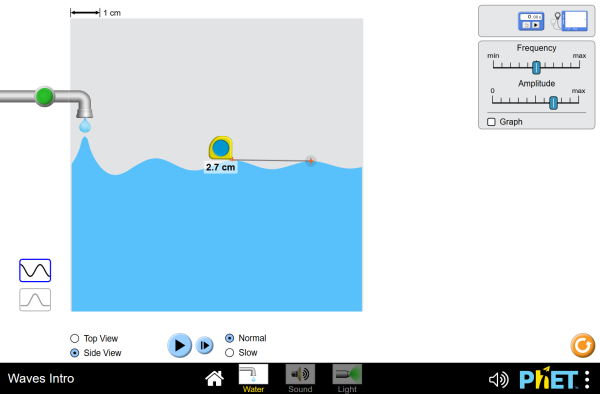

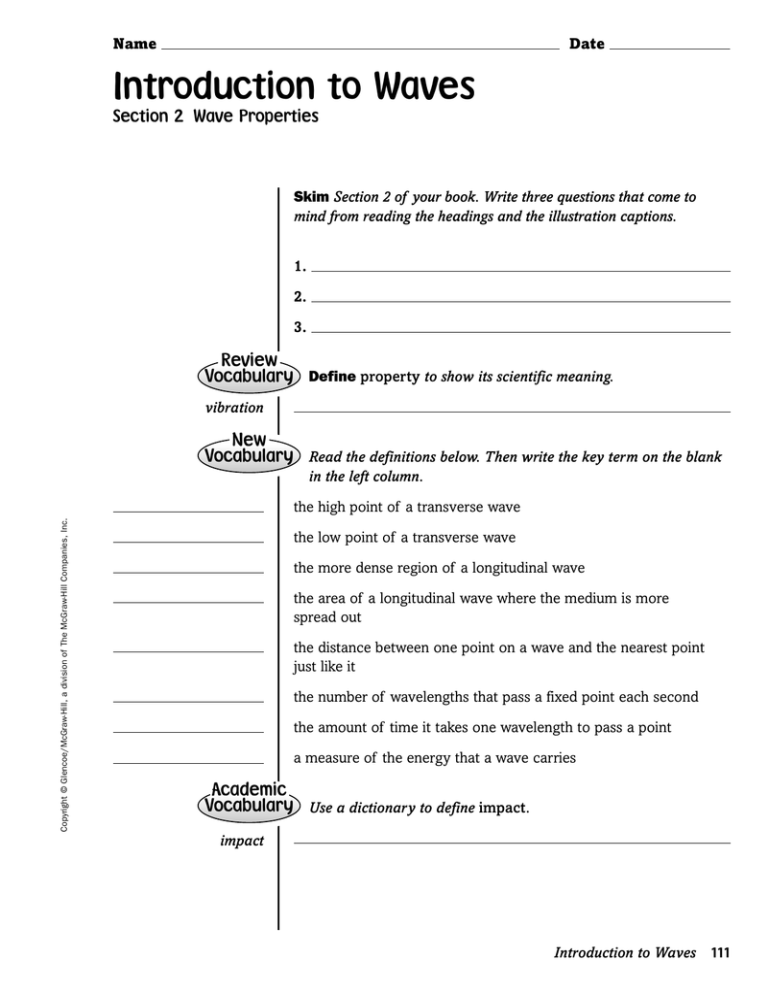
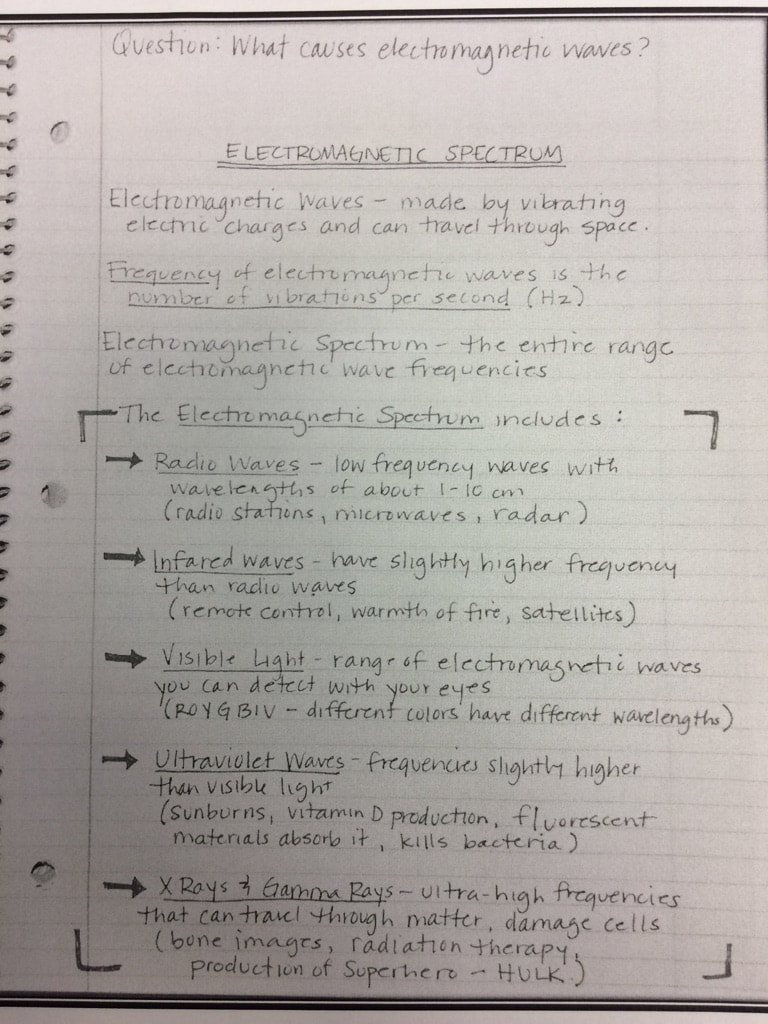


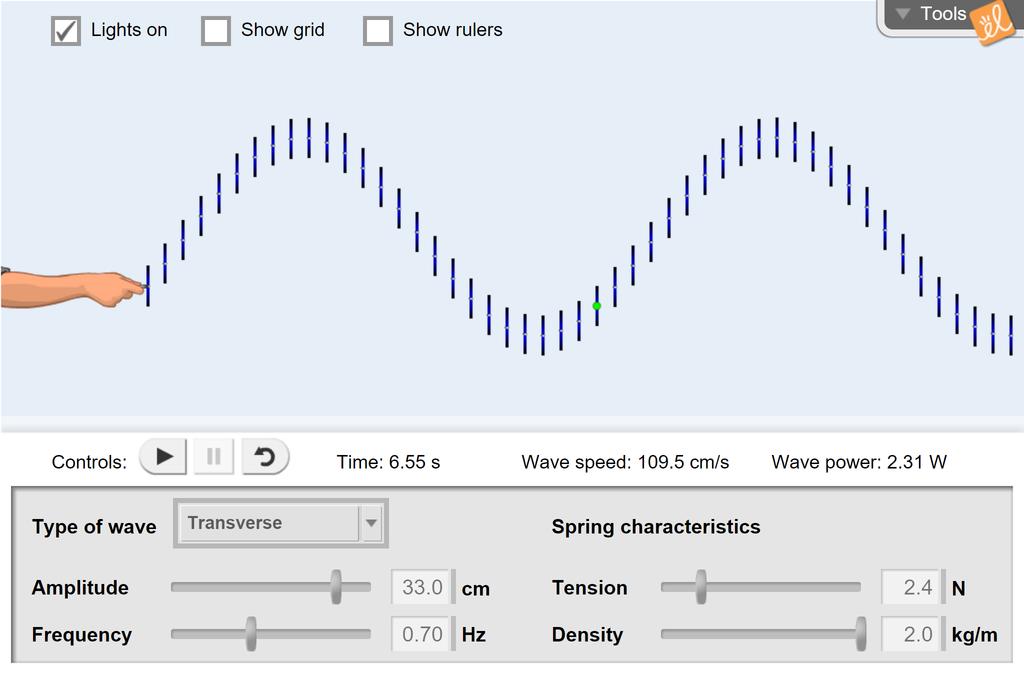

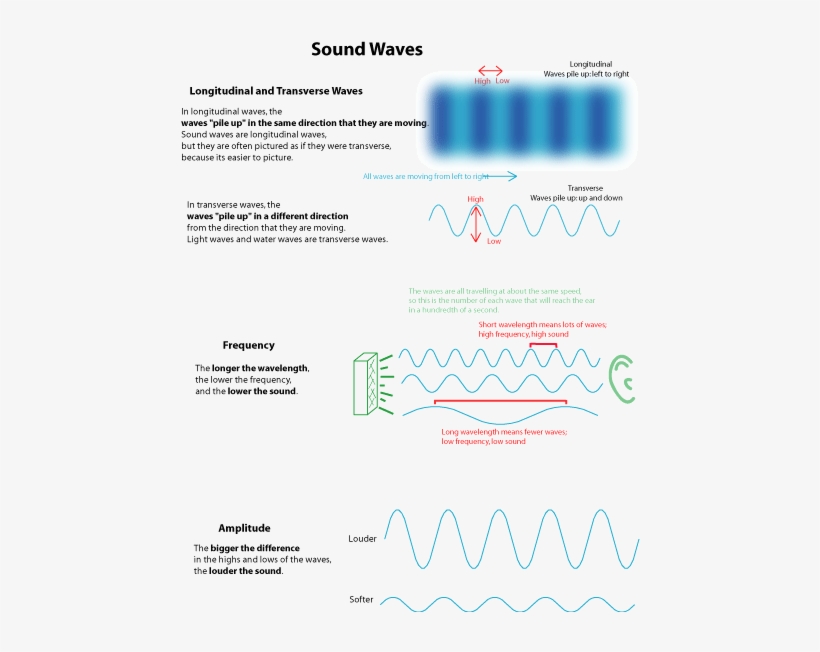

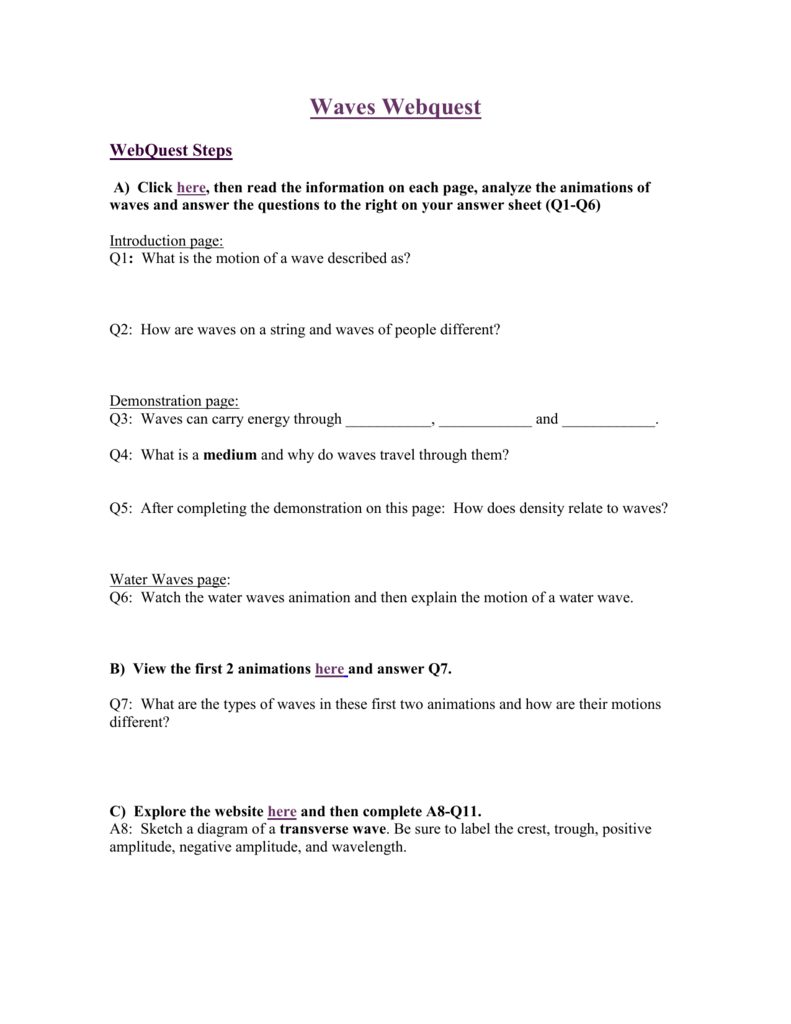





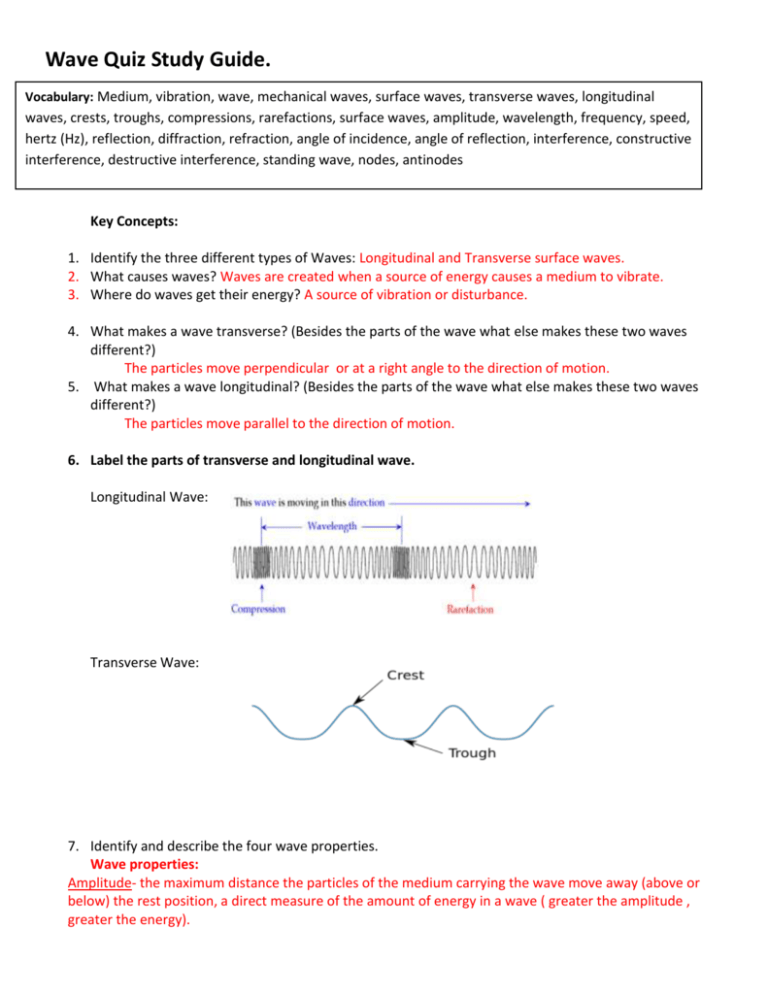
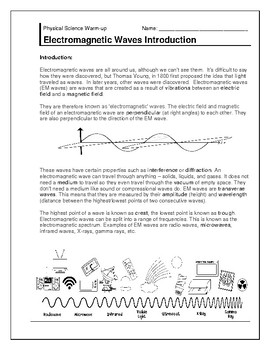




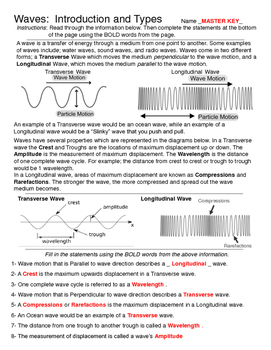
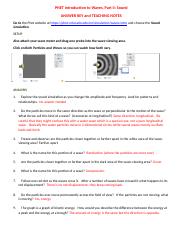




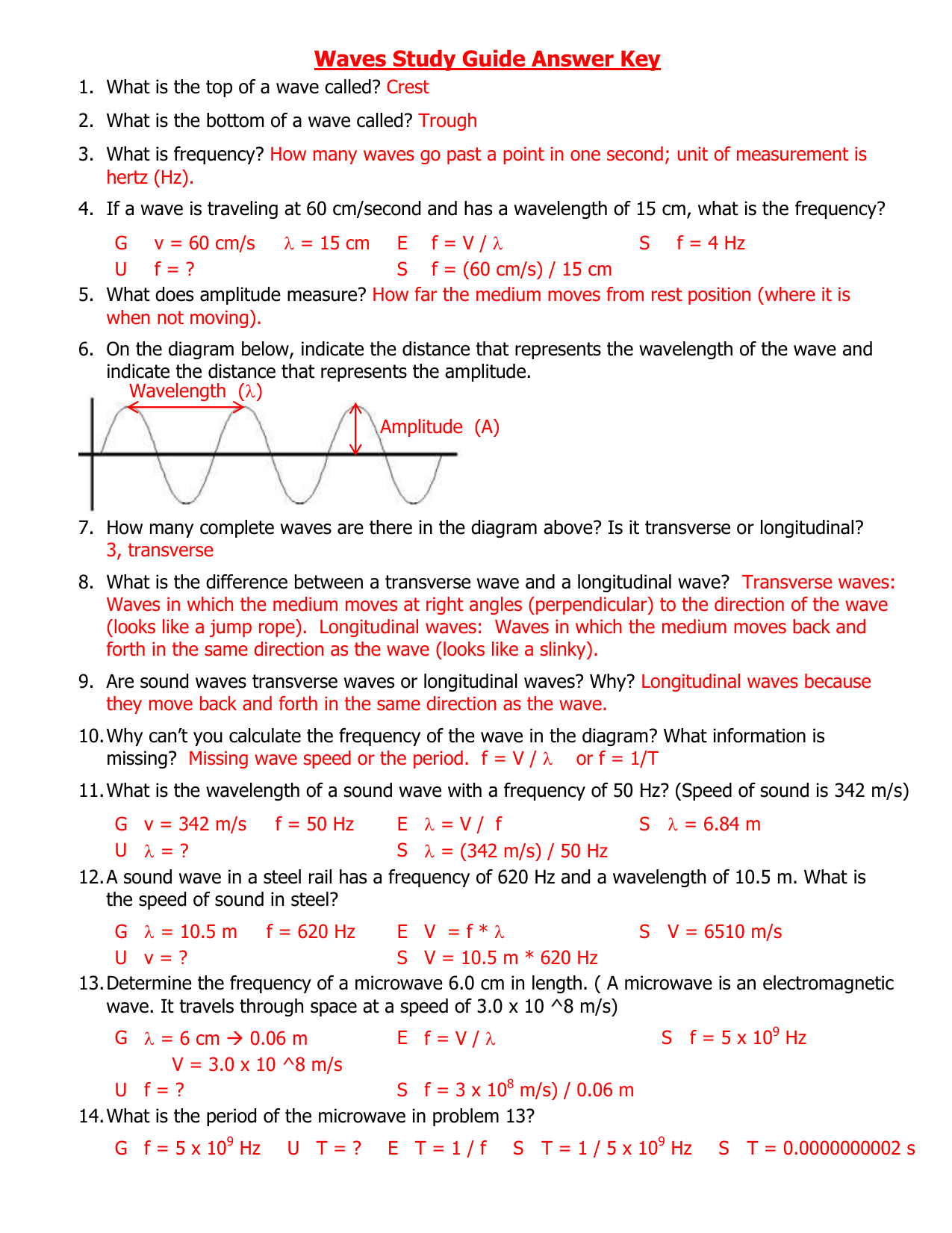
0 Response to "41 introduction to waves worksheet answers"
Post a Comment